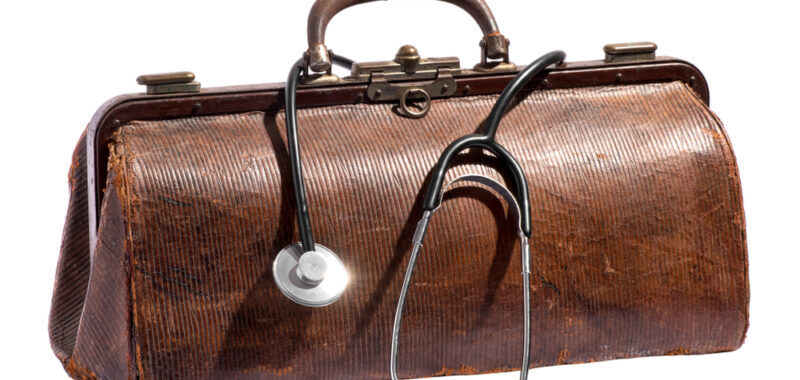This past year, my entire life has fit in the backseat of my Hyundai Elantra as I bounced between four states and traveled over 25,000 miles. As I walk into the hospital and my phone reconnects to the Wi-Fi after a night of using cell data in the parking lot, I am bombarded with emails from Credit Karma and loan services about my new balance. The debt accrues, my stomach grumbles, and the miles climb on my car. It’s funny – the residents tell me to go home, not knowing that I’m walking just steps away from where my car is parked, and I do not leave.
My school allows us to travel for our core rotations, and I elected to do all of my rotations away from my home hospital. While this was partially due to wanting to humor my nomadic spirit, it was also due to necessity. On these away rotations, students are provided housing by the school; all local rotations are not provided with housing. Though the Upper Valley of New Hampshire is rural and quaint, the cost of living is incredibly high, with an average monthly rent of $1,600 for a 1-bedroom apartment. After paying this rent for the two years of preclinical, I could not afford it any longer. While I say I chose to live in my car, it was not a choice that had much debate. I admit, the scene of a 26-year-old female living out of her car is chilling; however, the reality is much more frightening – I am not the only one. A close friend of mine was also homeless, bouncing between locations, visiting food pantries, and sleeping on friends’ couches. It is wild to think that in 10 years, we will have commas in our paychecks as surgeons, yet today we are picking up quarters on the sidewalk for laundry.
The cost of medical education extends far beyond tuition and textbooks. As a first-generation college student and a queer, low-income Latina, I’ve encountered unique challenges that my more privileged peers have not. While they debated vacation destinations for spring break, I agonized over whether to spend the $30 in my bank account on a practice NBME shelf exam or a warm meal. These decisions underscore the significant disadvantages low-income students face, not only in gaining admission to medical school but also in navigating the rigors of medical education. The weight of financial insecurity exacerbates existing mental health issues, contributing to the heightened risk of mental health disorders among medical students. Never did I envision returning to a state of homelessness without a stable address, as I prepared to pursue a lucrative medical specialty such as orthopedics.
Beyond the immediate challenges faced by medical students, the ramifications of financial hardship often extend well into residency and beyond. As graduates transition into residency, the burden of student loans looms, with repayment obligations beginning shortly after graduation. Despite earnest efforts to chip away at debt, the accrual of interest persists, perpetuating the cycle of financial strain. In residency, where salaries are modest at best, the pressure to manage loan payments on top of basic living expenses can be overwhelming. Many residents find themselves pinching pennies, navigating a precarious balancing act between financial obligations and personal well-being. Burnout, already a pervasive issue in the medical field, is further fueled by the stress of economic insecurity, casting a shadow over the early years of a physician’s career. By addressing the root causes of financial hardship in medical education, we can mitigate the risk of burnout and cultivate an environment where health care professionals can thrive from the outset of their careers.
The exorbitant cost of medical education is a systemic issue that demands attention and action. With my student debt exceeding $250,000 before interest, the financial strain is not just a burden; it’s a barrier to realizing my dreams and serving my community. There are lower-cost programs like those offered by NYU and Geisinger that are accelerated and focused on primary care specialties. While these programs play a vital role in addressing the primary care shortage, they do not always provide pathways for students like me to pursue specialized fields like orthopedic surgery.
Moreover, it’s crucial to acknowledge that these financial obstacles may contribute to the lack of diversity within specialized fields like orthopedic surgery. For orthopedic surgery, neurosurgery, ENT, and more, multiple subinternships are often required to be deemed a competitive applicant. These rotations incur costs of nearly thousands of dollars each, adding yet another barrier to pursuing these specialties. This hurdle is particularly large for those underrepresented in medicine, such as myself, perpetuating the cycle of homogeneity within certain specialties of medicine.
Medical students should not have to choose between pursuing their dreams and living in poverty. It’s time for medical schools, government entities, and health care institutions to come together to make medical education more accessible and affordable. Initiatives could include increasing scholarships and grants for medical students, reducing tuition costs, providing more comprehensive financial aid packages, and addressing the underlying factors driving the high cost of medical education.
Ultimately, it is not solely about reducing the financial burden for medical students; it is about creating a more compassionate health care workforce that represents the diverse community it serves. I am proud to know that my patients will have a physician who understands their background and financial strains, but it’s disheartening to recognize the unnecessary struggles I had to endure to reach this point.
Christina Stach is a medical student.


